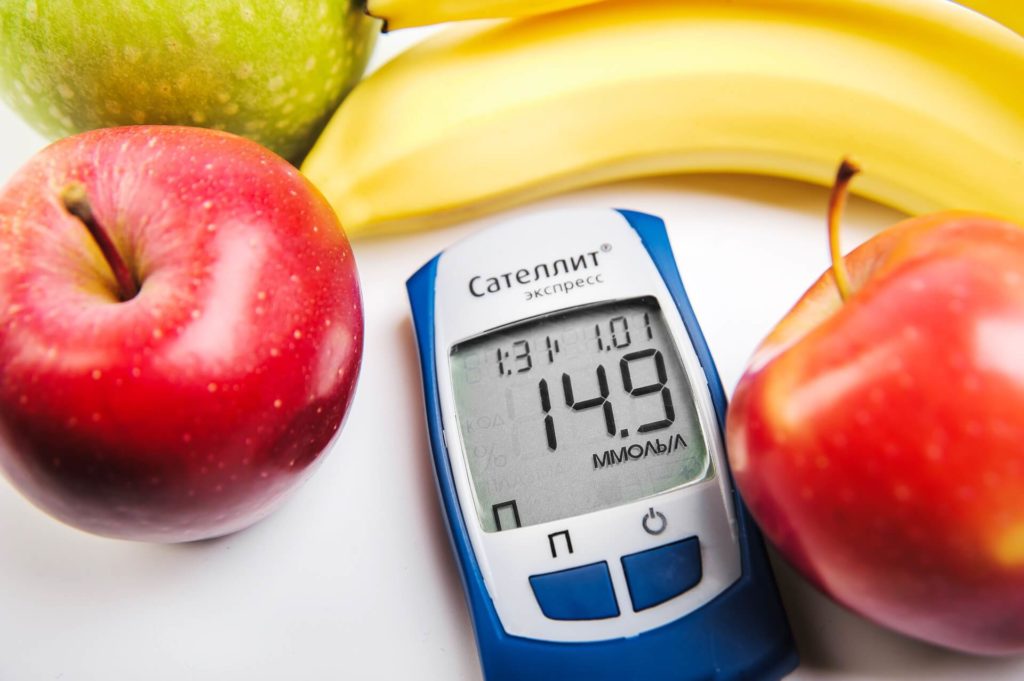Kidney Disease and Type 2 Diabetes: Secondary Service Connection

CCK Law: Our Vital Role in Veterans Law
What is Type 2 Diabetes?
Type 2 diabetes is a chronic condition that causes a person to experience increased blood glucose levels due to insulin resistance or deficiency. The severity of this condition varies on a case-by-case basis. Some people are able to control their type 2 diabetes with a restricted diet, whereas others may find it difficult to control blood sugar levels, even with regular insulin injections.
As type 2 diabetes progresses, blood sugar may become harder to control, resulting in complications that can lead to an increased degree of disability and additional conditions. One of the most common secondary conditions is kidney, or renal, disease.
What is Kidney Disease?
Chronic kidney disease encompasses the gradual loss of kidney function. The kidneys’ primary role is to filter wastes and excess fluids from a person’s blood, which are then excreted in their urine. When chronic kidney disease reaches an advanced stage, dangerous levels of fluid, electrolytes, and waste may build up in the body. Signs and symptoms of chronic kidney disease tend to develop over time and may include the following:
- Nausea
- Vomiting
- Loss of appetite
- Fatigue and weakness
- Sleep problems
- Changes in how much you urinate
- Decreased mental sharpness
- Muscle twitches and cramps
- Swelling of feet and ankles
- Persistent itching
- Chest pain, if fluid builds up around the lining of the heart
- Shortness of breath, if fluid builds up in the lungs
- High blood pressure (i.e., hypertension)
However, there are many types of kidney disease, all of which vary with regard to the level of severity.
Types of Kidney Disease
Importantly, there are various types of kidney disease, which may be caused by type 2 diabetes (see section “How Does Type 2 Diabetes Lead to Kidney Disease”), including the following:
Diabetic Nephropathy
Diabetic nephropathy is a kidney-related complication of type 1 and type 2 diabetes. It is also referred to as diabetic kidney disease. Approximately 25 percent of individuals with diabetes will eventually develop this specific type of kidney disease. Essentially, diabetic nephropathy affects the kidneys’ ability to remove waste products and extra fluids from the body. The best way to prevent or delay diabetic nephropathy is to maintain a healthy lifestyle and monitor both diabetes and high blood pressure.
Chronic Kidney Disease
Again, chronic kidney disease involves the progressive loss of kidney function over a period of months or years. Chronic kidney disease resulting from type 2 diabetes usually occurs when such renal complications go undiagnosed and therefore untreated. There are five stages of chronic kidney disease, each of which is determined by the glomerular filtration rate (GFR) (i.e., a test used to check how well the kidneys are working by estimating how much blood passes through the waste filters in the kidneys):
- Stage 1 – GFR is 90+; normal kidney function, but urine findings may point to possible kidney disease
- Stage 2 – GFR is 60-89; mildly reduced kidney function, with urine findings that point to kidney disease
- Stage 3 – GFR is 30-59; moderately reduced kidney function
- Stage 4 – GFR is 15-29; severely reduced kidney function
- Stage 5 – GFR is less than 15 or the individual is on dialysis; very severe or end-stage kidney failure
Importantly, individuals with a GFR of less than 60 for three months are classified as having Stage 3 chronic kidney disease, regardless of whether kidney damage is present.
End-Stage Renal Disease
End-stage renal disease occurs when chronic kidney disease reaches an advanced stage, as outlined above. In end-stage renal disease, the kidneys are no longer able to work as they should in order to meet the body’s needs. Again, this may lead to dangerous levels of fluids, electrolytes, and wastes in the body. With end-stage renal disease, individuals may need a kidney transplant or dialysis care in order to stay alive.
How Does Type 2 Diabetes Lead to Kidney Disease?
As type 2 diabetes progresses, meaning your body does not make enough insulin or cannot use the insulin it makes properly, additional complications such as kidney disease can develop. According to the National Kidney Foundation, type 2 diabetes is one of the leading causes of kidney disease. Specifically, 10 to 40 percent of individuals with type 2 diabetes will eventually suffer from kidney failure. The National Institute of Diabetes and Digestive and Kidney Diseases also estimates that type 2 diabetes is the leading cause of chronic kidney disease and kidney failure, accounting for nearly 44 percent of new cases of kidney failure in the U.S. Furthermore, research shows that people suffering from both diabetes and kidney disease have a worse prognosis than people with kidney disease alone.
Type 2 diabetes can cause damage to the kidneys and lead to kidney disease in a number of ways, including:
- Damage to the blood vessels inside the kidneys. The kidneys are filled with tiny blood vessels. Over time, high blood sugar levels in the blood can cause these vessels to become narrow and clogged. As a result, the kidneys become damaged and albumin (a type of protein) passes through and ends up in the urine where it should not be.
- Damage to the nerves in the kidneys. Diabetes can also cause damage to the nerves in your body, which carry messages between your brain and all other parts of your body, including your bladder. If the nerves in your bladder are damaged, you may not be able to feel when your bladder is full. The pressure from a full bladder can then damage your kidneys.
- Urinary tract infection. Bacteria is prone to grow faster in urine with a high blood sugar level, causing infection that can spread to the kidneys
Diagnosis
One of the earliest signs of kidney disease due to type 2 diabetes is increased excretion of albumin in an individual’s urine. Other early warning signs include using the bathroom frequently throughout the night and having high blood pressure. However, kidney conditions due to diabetes often goes unnoticed until it has progressed. Signs and symptoms that may occur in the later stages of the disease include:
- Increased levels of blood urine nitrogen (BUN) and creatinine in your blood
- Blood in urine
- Swelling of the hands, feet, and face
- Poor appetite and nausea
- Weakness and fatigue
For an official diagnosis of kidney disease due to type 2 diabetes, the following tests may be performed:
- Blood tests – Kidney function tests look for the level of waste products in your blood (as described above).
- Urine tests – Analyzing a sample of urine may reveal abnormalities that point to chronic kidney disease and help identify the cause (i.e., type 2 diabetes).
- Imaging tests – Doctors may use ultrasound to assess kidney structure and size.
- Removing a sample of kidney tissue for testing – Doctors may recommend a kidney biopsy to remove a sample of kidney tissue. The biopsy sample is sent to a lab for testing to help determine the cause of the kidney disease.
Typical kidney functioning results in small excretions of albumin that are generally too low to be detected by the testing processes described above. Normal kidney testing results usually yield an albumin secretion rate of less than 30mg per day. If tests reveal higher rates of excretion (i.e., between 30 and 300mg), kidney functioning is considered to be abnormal (i.e., microalbuminuria). Excretion rates above 300mg indicate that there are excess proteins in the urine sample, which is referred to as proteinuria. Kidney functioning based on test results can be summarized as follows:
- Normal albuminuria – less than 30mg per day
- Microalbuminuria – 30-300mg per day
- Proteinuria – more than 300mg per day
Treatment
The treatment of kidney conditions in diabetic patients is primarily focused on lowering blood pressure and maintaining blood sugar control to slow the progression of the condition. If the kidney disease has progressed to the point of kidney failure, there are three main types of treatment: kidney transplant, hemodialysis, and peritoneal dialysis. Importantly, VA provides healthcare services to veterans with chronic kidney condition, whether or not they have service-connected or non-service-connected status.
Dialysis Care for Veterans
Dialysis care is a covered benefit under VA’s Medical Benefits Package for veterans enrolled in VA healthcare. Again, this includes veterans who have been previously diagnosed with chronic kidney condition.
Home Dialysis Care
Self-care dialysis performed by a patient or designated caregiver in their home is an alternative to in-center dialysis if the veteran chooses VA as their healthcare provider. Veterans who desire this option, and who are medically acceptable candidates, must be provided with the necessary training, medical equipment and supplies, and home support required to perform home dialysis care. As mentioned above, there are two main types of home dialysis: hemodialysis and peritoneal dialysis. Both types must be made available to veterans by VA, or through non-VA care if the VA facility is unable to provide that service. For more information, visit VA’s website with a list of all Veterans Health Administration (VHA) dialysis facilities.
Kidney Transplant
Transplant services are available for those who are eligible, and veterans should visit VA National Transplant Program Page or contact their local VHA dialysis facility for more information.
Secondary Service Connection for Kidney Disease Due to Type 2 Diabetes
A secondary service-connected disability is a disability that resulted from a condition that is already service connected. For secondary service connection to be awarded, a nexus (i.e. a link) between the primary disability and secondary disability must be clearly established. In this case, veterans must prove that their kidney disease is due to or the result of their already service-connected type 2 diabetes. To apply for secondary service connection for kidney disease, veterans must file a claim and demonstrate the following to VA:
- A current diagnosis of kidney disease
- Medical evidence showing the relationship between his or her type 2 diabetes and his or her kidney disease
If secondary service connection is awarded, VA will then assign a disability rating for kidney disease.
VA Disability Ratings for Kidney Disease Due to Type 2 Diabetes
VA typically rates kidney disease under 38 CFR § 4.115a, Ratings of the Genitourinary System – dysfunctions, using the criteria for renal dysfunction. The criteria for each disability rating are as follows:
- “100% – requiring regular dialysis, or precluding more than sedentary activity from one of the following: persistent edema and albuminuria; or, BUN more than 80mg%; or, creatinine more than 8mg%; or, markedly decreased function of kidney or other organ systems; especially cardiovascular
- 80% – persistent edema and albuminuria with BUN 40 to 80mg%; or, creatinine 4 to 8mg%; or, generalized poor health characterized by lethargy, weakness, anorexia, weight loss, or limitation of exertion
- 60% – constant albuminuria with some edema; or, definite decrease in kidney function; or, hypertension at least 40% disabling under DC 7101
- 30% – albumin constant or recurring with hyaline and granular casts or red blood cells; or, transient or slight edema or hypertension at least 10% disabling under DC 7101
- 0% – albumin and casts with acute nephritis; or, hypertension non-compensable under DC 7101”
Call 800-544-9144 for a Free Case Evaluation with Chisholm Chisholm & Kilpatrick LTD
If you are seeking service connection for a secondary disability, the veterans lawyers at Chisholm Chisholm & Kilpatrick LTD may be able to help. We offer a free case evaluation. Call 800-544-9144 to speak with a member of our team today.
About the Author
Share this Post
